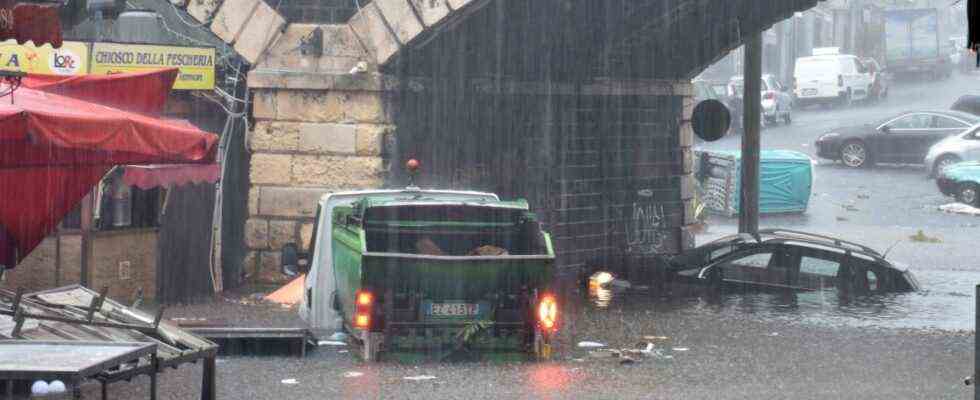And suddenly the Via Etnea was a river, a torrent. Italy is looking to Catania and wondering whether what has been happening in the city in Sicily and on its boulevard in the center since Monday is just a particularly extraordinary and unhappily long storm. Or whether the effects of climate change are already showing with force. In 24 hours, as much rain fell in Catania and the surrounding area as in six months, and in certain places as much as in a whole year. “Flash floods”, say the experts, when they mean attack-like and violent floods.
The water carried everything away, it flooded the bars on Via Etnea. The Garibaldi hospital was also in the water, the town hall, the court. Salvo Pogliese, the city’s mayor, had asked the residents to stay at home and, if possible, to stay on higher floors. But not all of them followed the advice. Two men were carried away by the masses of water and died, a woman is still being sought. And the weather forecasts for the coming days are bad for the whole region. There are also concerns about 367 migrants, many of them minors, who are waiting in front of Agrigento on the “Geo Barents”, a ship of the aid organization Doctors Without Borders, to be assigned a safe harbor. Whole harvests are at risk, the area around Catania is known for its wonderful citrus fruits, among other things.
In the south of the island a “Medicane” turns – this is what they call storm lows in the Mediterranean. They often form in autumn in the Ionian Sea and are usually four times less powerful than their relatives in the tropics. But this hurricane puzzles meteorologists: Its winds are around 120 kilometers per hour, which is quite average, but so far it has barely moved. It is currently unclear whether it will soon fizzle out in the sea or gain additional speed and then reach the east coast of Sicily.
“It’s the same movie every year,” writes La Stampa
Last summer, when 48.8 degrees Celsius was measured on the island, allegedly the highest temperature ever recorded in Europe, there was a debate in Italy about whether there was already enough scientific evidence that these events were consequences of the global warming. Doubt would be daring, the southern Mediterranean is experiencing extreme phenomena in ever faster succession: extreme drought, extreme heat, extreme rainfall. Climate researchers, who are now being interviewed by Italian newspapers, see the Mediterranean as a “hotspot for climate change”.
But these major global upheavals are only part of the problem, the rest is homemade: Italy suffers from a lack of prevention, from building sins and from concreted river beds. “It’s always the same movie, every year,” writes La Stampa in a comment, “whether a disaster hits Liguria, Piedmont or Sicily: every time we end up in the mud.”

